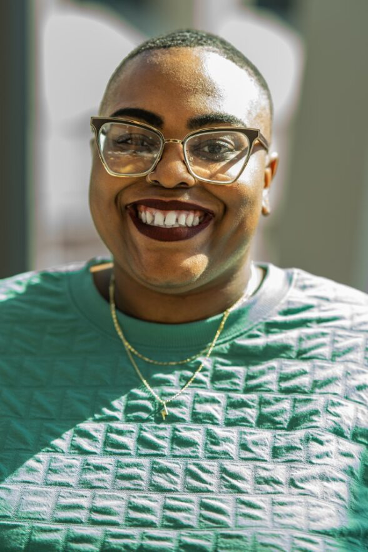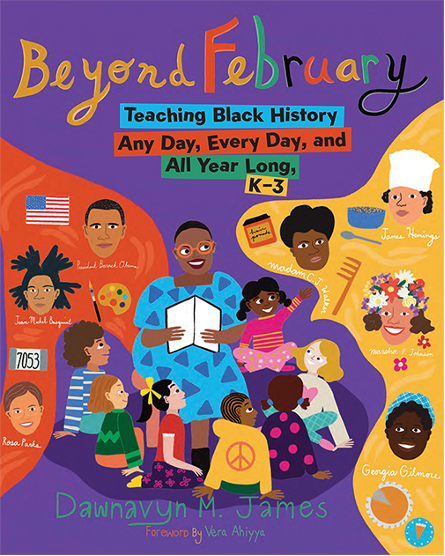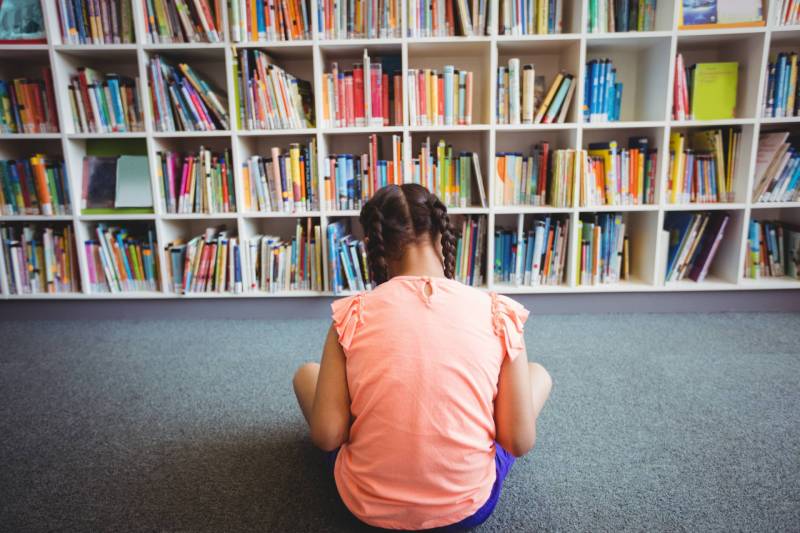A single title may end up being a part of multiple text sets around different topics or themes. For example, I sometimes read Let the Children March alongside books about Martin Luther King Jr. because he is featured in that book and the book is set during the Civil Rights Movement. But other times I read it when we learn about Ruby Bridges so that my students can better understand the ways children participated in the Civil Rights Movement. As you begin to see similarities and connections among books, start creating your own collections lists.
It is important to note that the resources that make up your collections may not always be picture books. Sometimes you may want to include a cookbook, chapter book, piece of art or song. Whatever the topic, educate yourself and then find the resources to educate your students.
Keep an eye out for new favorites
As you read and share books, you and your students will notice some of the same authors and illustrators who have worked on multiple books about Black histories. For example, I had a class of kindergartners and first graders who could spot illustrations by Kadir Nelson from a mile away. And as a teacher, I know that I can truly depend on books written by Carole Boston Weatherford to deliver accurate information about different Black histories, whether about people or events. Keep an eye out for these authors and illustrators via their websites or social media accounts to see what they are currently working on and to get updates on book release dates. There are also great social media accounts that share a wide variety of diverse picture books, including books about Black histories. Social media and book creators’ own websites are great ways to find and stay connected with the latest titles from our favorite authors and illustrators.
Share Black stories
There is a true love for Black history-focused books in my classroom. My students can access them on the shelf, read them with a buddy and refer to them when making connections to other books we read.
I Am Every Good Thing is one such book that means a lot to my class. This is a book from our Black joy collection, one we read at the beginning of the year, on a rainy day, during morning meetings, in the middle of the year, during our unit on community, and at the very end of the year as a farewell and affirmation. I have found it in the writing center, a student’s mailbox and in the arms of a sleeping kindergartner in our classroom’s safe place. It’s a book in which my students see themselves and see their classmates, and they see Black histories. It is a book that affirms us, comforts us and challenges us to remember who we are.
I’d love to be able to list every single book that highlights, celebrates, honors or features Black histories, but that is the work of a lifetime. My hope is that you can find those books, create those collections and read the books that benefit the education of your students, yourself and the community of your classroom. Books expose students to a fuller narrative of Black history. Not just the tragedy and the hardships but also the resistance. Not just the struggle and enslavement but the triumphs and successes, the innovation, brilliance, ingenuity, courage, intellect and dignity. Books that center Black history aren’t just for Black children; they are books for all children.
Dawnavyn’s ultimate Black history book collection
This is the collection I’ve been building since my junior year of college, and it is constantly growing. I have used these children’s books again and again with students to teach Black histories. See what collections you can create from this list!
The Undefeated, written by Kwame Alexander and illustrated by Kadir Nelson
Little Legends: Exceptional Men in Black History by Vashti Harrison with Kwesi Johnson
Little Leaders: Bold Women in Black History by Vashti Harrison
28 Days: Moments in Black History that Changed the World, written by Charles R. Smith Jr. and illustrated by Shane W. Evans
The Roots of Rap: 16 Bars on the 4 Pillars of Hip Hop, written by Carole Boston Weatherford and illustrated by Frank Morrison
Seven Spools of Thread: A Kwanzaa Story, written by Angela Shelf Medearis and illustrated by Daniel Minter
Heart and Soul: The Story of America and African Americans by Kadir Nelson
Coretta Scott, written by Ntozake Shange and illustrated by Kadir Nelson
Black Heroes: A Black History Book for Kids by Arlisha Norwood
The Power of Her Pen: The Story of Groundbreaking Journalist Ethel L. Payne, written by Lesa Cline-Ransome and illustrated by John Parra
Sugar Hill: Harlem’s Historic Neighborhood, written by Carole Boston Weatherford and illustrated by R. Gregory Christie
We Are the Ship: The Story of Negro League Baseball by Kadir Nelson
Have I Ever Told You Black Lives Matter, written by Shani Mahiri King and illustrated by Bobby C. Martin Jr.
Let Freedom Sing by Vanessa Newton
Evicted! The Struggle for the Right to Vote, written by Alice Faye Duncan and illustrated by Charly Palmer
H Is for Harlem, written by Dinah Johnson and illustrated by April Harrison
Stand Up! 10 Mighty Women Who Made a Change, written by Brittney Cooper and illustrated by Cathy Ann Johnson
The People Remember, written by Ibi Zoboi and illustrated by Loveis Wise

Dawnavyn M. James is an early childhood, elementary and Black history educator and researcher from Kansas City, Missouri. She has given presentations and led workshops promoting Black history teaching in early childhood and elementary classrooms. Through consulting, Dawnavyn has supported teachers in numerous school districts as they work to teach Black history year-round through the use of picture books. She believes that picture books centering Black history are one of the greatest ways to bring Black histories into the classroom. She has taught students from kindergarten to fifth grade in Columbia, Missouri, but her favorite years of teaching were her three years with kindergartners. She received her teaching degree from Stephens College and is currently pursuing her doctorate at the University at Buffalo and is a fellow at the Center for K-12 Black History and Racial Literacy Education. Dawnavyn is also the founder of The Black History Club, an organization that empowers and equips teachers and students with information and resources that will benefit themselves, their families and the community through engaging with Black histories.
 students, who all found ways of connecting to this set.
students, who all found ways of connecting to this set.


